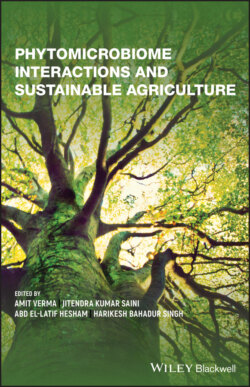Читать книгу Phytomicrobiome Interactions and Sustainable Agriculture - Группа авторов - Страница 40
3.7 Recent Progress in Metagenomic Studies of Plant Microbiome
ОглавлениеA lot of metagenomics studies have been conducted in the recent past to characterize the rhizosphere bacterial diversity based on 16S rRNA gene amplification (Soni et al. 2010). Several other advanced molecular techniques such as PCR‐RFLP (Singh et al. 2010), DGGE and TTGE (Soni et al. 2010) and real‐time PCR (Premalatha et al. 2009; Soni and Goel 2010; Suyal et al. 2015a, 2015b) have also been coupled together with metagenomics to explore the plant microbiome. Researchers have also been able to beautifully paint the dominance of novel genes, such as csp (Premalatha et al. 2009) and nifH genes (Soni and Goel 2010; Soni et al. 2016) from the Himalayan region in Uttarakhand state of north India. Like nifH genes, nif might evolve from their nearest genes or adjacent regions and become specific in their functions in due course of time (Soni and Goel 2010). Using metagenomics, the existence of diverse diazotrophic microbial assemblages in the rhizosphere of indigenous red kidney bean (RKB) was also discovered (Suyal et al. 2015a, 2015b). Besides this, several studies related to plant microbiome have been reviewed and compiled to provide comprehensive knowledge about applications of metagenomics in plant microbiome studies (Soni et al. 2012, 2017; Soni 2013; Suyal et al. 2016; Goel et al. 2017a, 2017b, 2017c; Goel et al. 2018; Kumar et al. 2018a).
